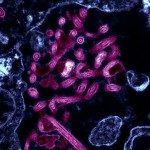Lien vers Pubmed [PMID] – 34088507
Lien DOI – 10.1016/j.vaccine.2021.05.061
Vaccine 2021 Jun; 39(29): 3916-3925
Human Papillomavirus (HPV) vaccine coverage in France is below 30%, despite proven effectiveness against HPV infections and (pre-)cancerous cervical lesions. To optimise vaccine promotion among adolescents, we used a discrete choice experiment (DCE) to identify optimal statements regarding a vaccination programme, including vaccine characteristics.Girls and boys enrolled in the last two years of five middle schools in three French regions (aged 13-15 years) participated in an in-class cross-sectional self-administered internet-based study. In ten hypothetical scenarios, participants decided for or against signing up for a school-based vaccination campaign against an unnamed disease. Scenarios included different levels of four attributes: the type of vaccine-preventable disease, communication on vaccine safety, potential for indirect protection, and information on vaccine uptake among peers. One scenario was repeated with an added mention of sexual transmission.The 1,458 participating adolescents (estimated response rate: 89.4%) theoretically accepted vaccination in 80.1% of scenarios. All attributes significantly impacted theoretical vaccine acceptance. Compared to a febrile respiratory disease, protection against cancer was motivating (odds ratio (OR) 1.29 [95%-CI 1.09-1.52]), but not against genital warts (OR 0.91 [0.78-1.06]). Compared to risk negation (“vaccine does not provoke serious side effects”), a reference to a positive benefit-risk balance despite a confirmed side effect was strongly dissuasive (OR 0.30 [0.24-0.36]), while reference to ongoing international pharmacovigilance without any scientifically confirmed effect was not significantly dissuasive (OR 0.86 [0.71-1.04]). The potential for indirect protection motivated acceptance among girls but not boys (potential for eliminating the disease compared to no indirect protection, OR 1.57 [1.25-1.96]). Compared to mentioning “insufficient coverage”, reporting that “>80% of young people in other countries got vaccinated” motivated vaccine acceptance (OR 1.94 [1.61-2.35]). The notion of sexual transmission did not influence acceptance.HPV vaccine communication to adolescents can be tailored to optimise the impact of promotion efforts.

